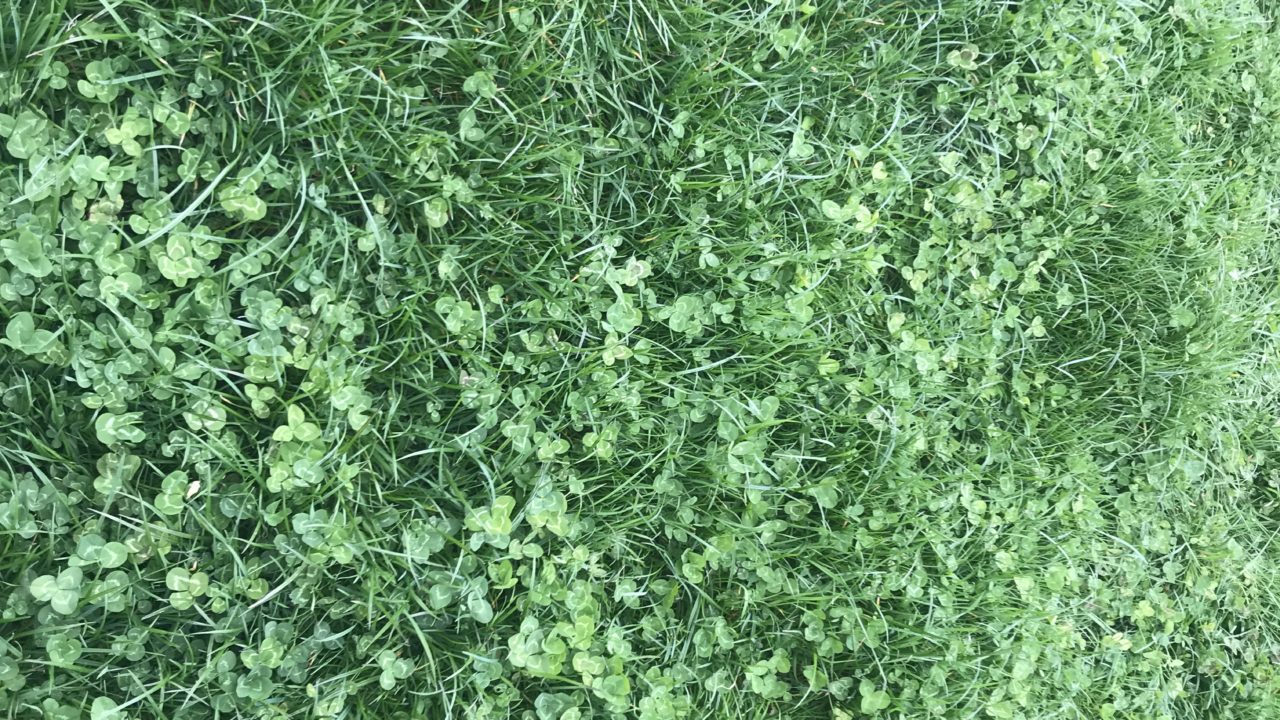Many beef and sheep farmers are exploring ways to reduce their dependency on chemical fertiliser to grow grass.
One such way is through incorporating legumes such as clover into grassland swards.
Clover has the ability to trap atmospheric nitrogen and make this available in the soil for plant uptake.
While clover has many benefits, managing it in grazing ground is not as straightforward as a simple perennial rye grass sward.
It needs a little more TLC if it is to grow well and persist in grazing ground.
Advice on sowing white clover can be found here.
The topic of grass/clover swards was one of the key topics discussed at a recent series of College of Agriculture Food and Rural Enterprise (CAFRE) farm walks in Northern Ireland.
CAFRE offered beef and sheep farmers some very useful advice.
Beef and sheep farmers – growth pattern
Before being able to manage clover effectively, beef and sheep farmers need to understand its growth pattern.
Grass starts to grow at soil temperatures of 5-6°C but clover needs soil temperatures closer to 10°C.
With this in mind, farmers should remember that grass will naturally dominate a grass/clover sward in the spring and, therefore, will need fertiliser.
There are three stages of white clover growth from germination to full establishment.
The three stages are:
- Rosette phase;
- Expansion phase;
- Clonal phase.
During the rosette and expansion phases, the white clover plant relies heavily on a central taproot for growth and development.
In the clonal phase, the plant is fully reliant on the stolons it produces for growth and persistence.
Clover does not fix nitrogen in the rosette phase, which lasts for approximately three months. It is only at 12-18 months post sowing that nitrogen fixation begins.
Where clover is present, the best policy for grazing to encourage clover growth is graze ‘tight and often’.
Clover grows and spreads through ‘stolons’ – stems attached to the soil.
These stolons stay on top of the ground and it is essential to get light down to these stolons to promote growth.
The stolon mass determines the clover content of swards.
While clover fields should be grazed ‘tight and often’ farmers should avoid overgrazing and winter damage to fields. Heavy cuts of silage should also be avoided if possible.
When spraying paddocks, only clover-safe products should be used.
There are a number of issues farmers should be mindful of when grazing clover, such as bloat in livestock.
Farmers should avoid letting excessively hungry cattle or sheep into fields of clover.
If clover content is greater than 50%, cattle or sheep are more prone to bloat when they ‘gorge’ themselves on clover.
Livestock should be checked regularly for the first three hours after being moved into a clover field.
To ensure clover persists the following spring, the sward should be grazed well in the late autumn, ideally with sheep.
